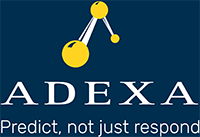Is your Supply Chain T2T or Just E2E?
Yes, supply chains need to be end-to-end. But that is only one dimension of the supply chain. As the recent trend suggests supply chains are not unidirectional and the impact of circular economy can be highly impactful. But there is more than just connecting horizontally or bi-directionally. We also need to go vertically, i.e. top to toe or toe to top (T2T). Gartner’s CORE model of the supply chain starts at the network or Configuration level, to Optimization to Respond planning and finally Execution level. Many companies that have implemented the S&OP, or optimization level, are now struggling to simply execute the plans. There are two reasons for that. The high-level plans are either not accurate enough for respond planning and/or their respond planning is either manual or disjointed from the higher-level plans.
Trying to make two disjointed systems work together causes data and decision latency. It is the adage of throw it over the wall and hopefully it will work. Only to realize that it gets thrown back due to inconsistency in planning logic and use of different set of data. More importantly, having two disjointed systems, how would it be even possible to respond to real-time disruptions that companies experience every day? Disruptions such as changes in orders, shipping delays, late truck arrivals, weather issues and so on. For a system to respond to such events, it needs to always have an up-to-date knowledge of the operations. So that when an event occurs, it can sense the vibrations that it causes in the entire supply chain, i.e. the internal operations, customers, suppliers, and 3PL. This capability requires a true digital twin at every level of the supply chain. It also needs to have a cognitive model of the supply chain to “understand” both the relevance and impact of the event in real-time. S&OP solutions by themselves or a disjointed combination of S&OP and respond-planning cannot perform as such because they lack a shared model and shared intelligence to make decisions reliably and timely, other than just passing data to each other.
It is our firm belief that planning, and execution are a continuum, rather than just being connected with a “bridge.” There needs to be shared data and shared SC digital twin so that decisions made at the higher level support the decisions at the lower level by defining guideposts. Conversely, decisions and disruptions made at the execution level are also transparent to the higher level so that it can respond to customer demands in real-time and plan more realistically for the future.
For more information on planning and execution continuum, and how a supply chain digital twin and cognitive networks combine to deliver solutions to real-time events click Here.



